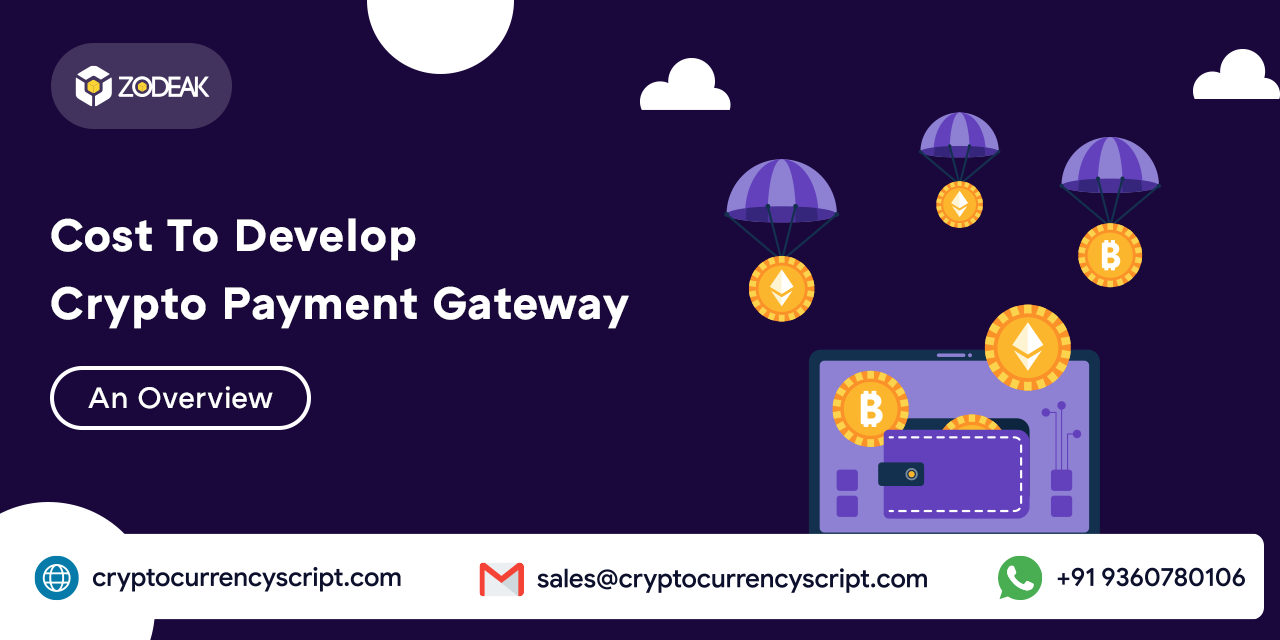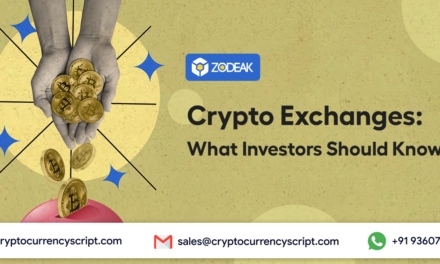Today, we will be shedding light on the cost to develop crypto payment gateway and other technical aspects that are related to it. However, before we delve into the subject matter, it is essential to have a basic understanding of the fundamental concepts involved in the process.
In the crypto industry, among various businesses, developing a crypto payment gateway business could be a profitable option. This is because the value of every crypto-based business is subject to volatility, and hence, directly proportional to the cryptocurrency value. However, a crypto payment gateway business stands out as it simply processes transactions without any involvement in crypto values.
In the rapidly evolving digital currencies, the role of crypto payment gateways has become increasingly crucial. These gateways act as intermediaries, facilitating seamless transactions between cryptos and businesses that choose to accept digital or fiat currency payments.
In this blog, we’ll explore a comparison of traditional payment methods, and the steps involved in creating one, with a particular focus on the associated costs.
Let’s begin!
Crypto Payment Gateways Vs Traditional Methods: Comparison
The fundamental differences between crypto payment gateways and traditional payment methods lie in their scope and underlying technologies.
Crypto payment gateways are a relatively new and innovative method of facilitating transactions using cryptocurrencies such as bitcoins and altcoins. Unlike traditional systems that mainly process transactions using fiat currencies like US dollars, crypto payment gateways have been specifically designed to handle digital asset transactions.
One of the most significant advantages of using a crypto payment gateway is the use of blockchain technology. The blockchain technology ensures that transactions are secure and transparent. This technology eliminates the need for middlemen, thereby reducing fees and increasing transaction speed.
Another significant advantage of crypto payment gateways is that they allow customers to manage their wallets and keep their digital assets safe. This gives customers more control over their funds, which is impossible with traditional payment methods. With traditional techniques, customers often have to rely on banks to hold and manage their cash.
Furthermore, crypto payment gateways offer a decentralized, secure, and user-centric approach to digital transactions. This approach radically alters how payments are made and received in the modern-day, making it more convenient and secure for businesses and customers alike.
Therefore, crypto payment gateways are a game-changer in the world of financial transactions. They offer a secure, transparent, and decentralized way to handle digital assets and are gradually gaining popularity among businesses and individuals.
Hope you understand how today’s payment gateway differs from traditional payment methods, now let’s move on to how to create a crypto payment gateway.
Steps to Consider When Developing a Crypto Payment Gateway
The process of building a crypto payment gateway is equivalent to creating software for any other platform, or even a crypto exchange. To build a crypto payment gateway, there are a few essential steps that must be followed closely.
Here are some of the key steps to follow when creating one:
Designing the Architecture
Designing an architecture requires careful consideration of various elements to ensure a payment is secure. The user interface should provide customers with a seamless experience, allowing them to easily make crypto payments.
The transaction processing component must handle the flow of payment requests, verify transactions, and update related records.
Developing Features
Developing features for a crypto payment gateway involves a complete process aimed at improving system functionality and user experience. Advanced features such as crypto-to-fiat currency conversion, recurring payments, and customizable invoicing options.
These can further streamline the payment experience, and increase the adoption, trust, and convenience in the ever-evolving world of digital currencies.
Security Measures
Implementing strong security measures is crucial to ensure the integrity and security of a crypto payment gateway. Reliable user authentication must be put in place to validate users’ identities and stop unwanted access.
Data encryption techniques should be used to safeguard sensitive data during transmission and storage. Continuous monitoring of network traffic, system logs, and user activity can help detect and respond to suspicious behavior or unauthorized access attempts.
Creating User-friendly Interface
Creating a user-friendly interface for a crypto payment gateway is essential as it is important to prioritize simplicity and clarity. It provides users with clear instructions and guidance on how to navigate through the payment process.
Also, provides how to use icons and labels to represent different functions and actions. Incorporating responsive design and optimizing the loading speed of the interface can further enhance user experience.
Integrations
Integration is another crucial aspect of this process. By integrating with existing payment gateways, exchange platforms, and other crypto-based services, businesses can start accepting cryptocurrencies as payment.
This requires the use of APIs, plugins, or SDKs that allow for seamless communication between the payment gateway and existing infrastructure to enable easy transactions and payments.
Testing And Deployment
To ensure that crypto payment gateways operate smoothly and integrate seamlessly across various platforms, it is important to go through a rigorous testing and deployment, process.
Testing plays a vital role in identifying and addressing any bugs, security threats, or compatibility issues that might arise. This involves carrying out comprehensive functional tests, stress tests, and security audits to ensure that the payment gateway is reliable and robust.
Deployment involves configuring and setting up the gateway on different platforms while ensuring compatibility with various operating systems, web browsers, and mobile devices. Proper deployment is essential to ensure that the payment gateway operates efficiently and effectively.
Cost To Develop Crypto Payment Gateway
The cost of developing a crypto payment gateway can vary based on the factors we discussed above. Such as the complexity of the architecture, desired features, and security measures. Expenses to develop a payment gateway may include:
Development Costs: Hiring developers and experts in blockchain technology.
Security Costs: Implementing robust security measures and continuous monitoring.
Integration Costs: Ensuring seamless integration with existing platforms for payment processing.
Testing Costs: Conducting thorough testing to identify and fix potential issues.
Operational Costs: Ongoing maintenance and support to ensure its functions.
Final Words
If you’re thinking about cryptocurrency payment gateway Development as your business model, then you are on the right track. They are an important part of the digital revolution and businesses that use them stay ahead.
If you need more guidance on how to use crypto payment gateways, feel free to reach out to Zodeak. Our experts are there to provide you with the guidelines and support you need to kick-start your business.





